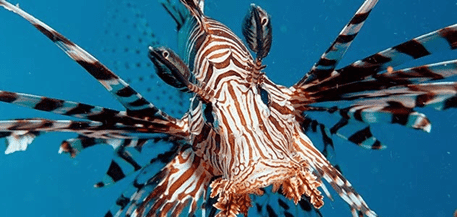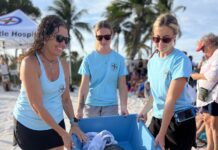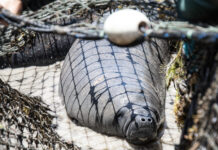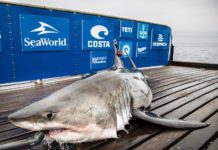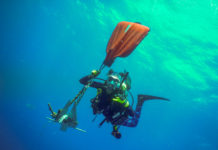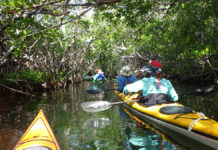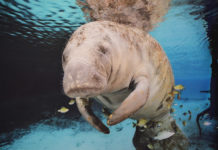By Theresa Java
The annual Upper Keys Lionfish Derby took place Sept. 10 at John Pennekamp Coral Reef Park. It wasn’t the resounding success it usually is — only 323 lionfish were harvested, but that’s still a large number of invasive fish removed from Keys waters. The reason for the poor showing? The weather. Organizers and participants say high winds and poor visibility may have been a factor of the low yield (only eight of the registered 13 teams had any luck). Also, the top-contending team that normally participates was unable to participate this year.
Here’s the good news — data from the event suggests the lionfish population is static.
“The size distribution of the landed fish, it is almost identical to last year,” said Lad Akins, REEF’s director of special projects. “This leads me to guess that the population is about the same as last year and we just had fewer teams fishing.”
“Rob’s Angels” harvested the most fish at 113. They also claimed the largest fish. Team members included Rob Waara, Alecia Adamson, Nicole Fabian and Sara McCutcheon. Close in second place was “Half Circle,” who collected 103 fish. Team members were Anna McBee, Jess Levy, Travis Gomez-Phillips and Brett Roach. “Key Dives” took third place with 47 harvested lionfish. The team was Leslie Peaker, Mary Wipperman, Jason Adams and Mike Goldberg.
REEF is hosting a special festival Thursday to Sunday, Sept. 29-Oct. 2. Seminars, parties and dives are planned. For more information about participating, visit www.reef.org.
2016 Summer Derby Results Harvested: 323 Largest: 16 ¼ inches Smallest: under 2 inches
OTHER NUMBERS:
96 hours : Lionfish can spawn every four days in warmer climates.
18 : Most species of lionfish have 18 venomous spines.
15,000 : The maximum number of eggs released by female lionfish in a single mass. The masses drift for about 25 days.
TIME LINE:
1985: the Indio-Pacific native fish was first discovered of the Atlantic Coast near Dania Beach, most likely a direct result from the aquarium trade.
2002: Lionfish were found in North Carolina.
2003: A year later, 19 lionfish sightings were documented at eight different locations along the North Carolina coast.
2010: REEF documented 707 captured lionfish in the Upper Keys
2014: The average size of the lionfish extended 123 millimeters from 139mm to 262mm. During the Derby, a 434mm fish was recorded, which is over 17 inches.
2016: The National Aquatic Species’ real-time map puts this invasive species as far north as Narragansett, Massachusetts and dotted up and down the East coast. The heaviest concentrations in the U.S. wrap the Florida coastline from the Atlantic to the Gulf of Mexico as far as Texas.
















